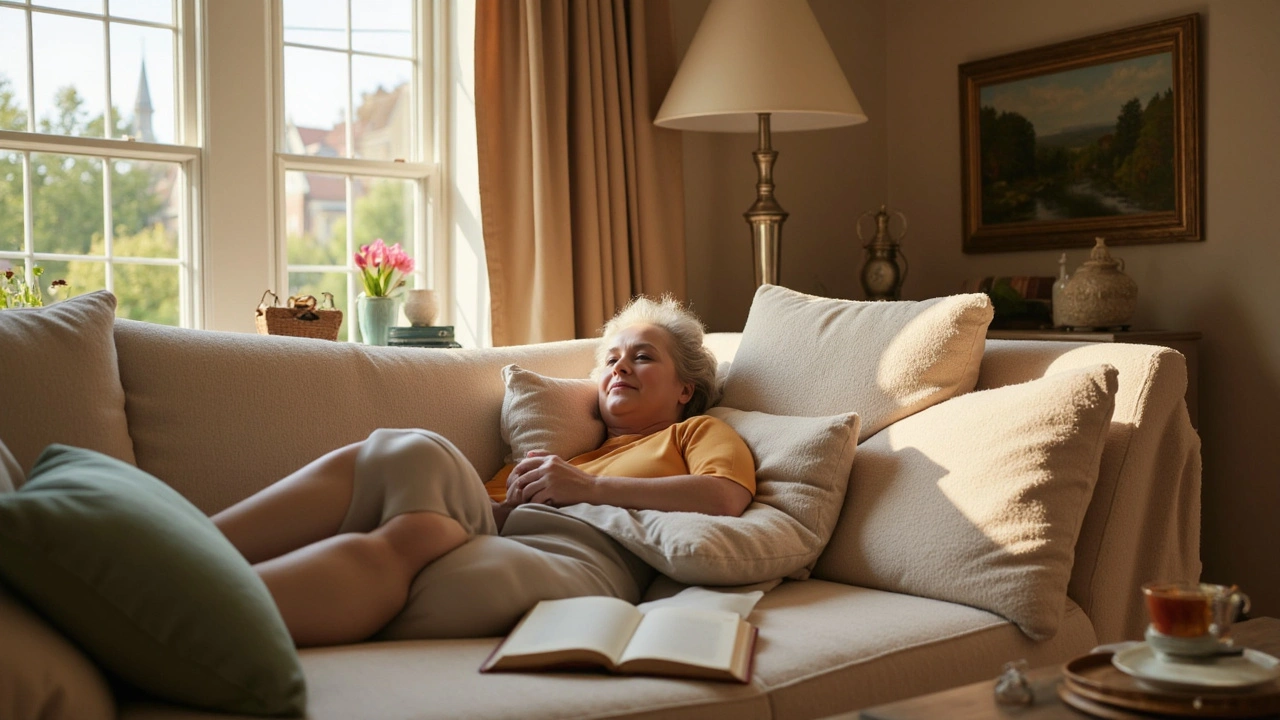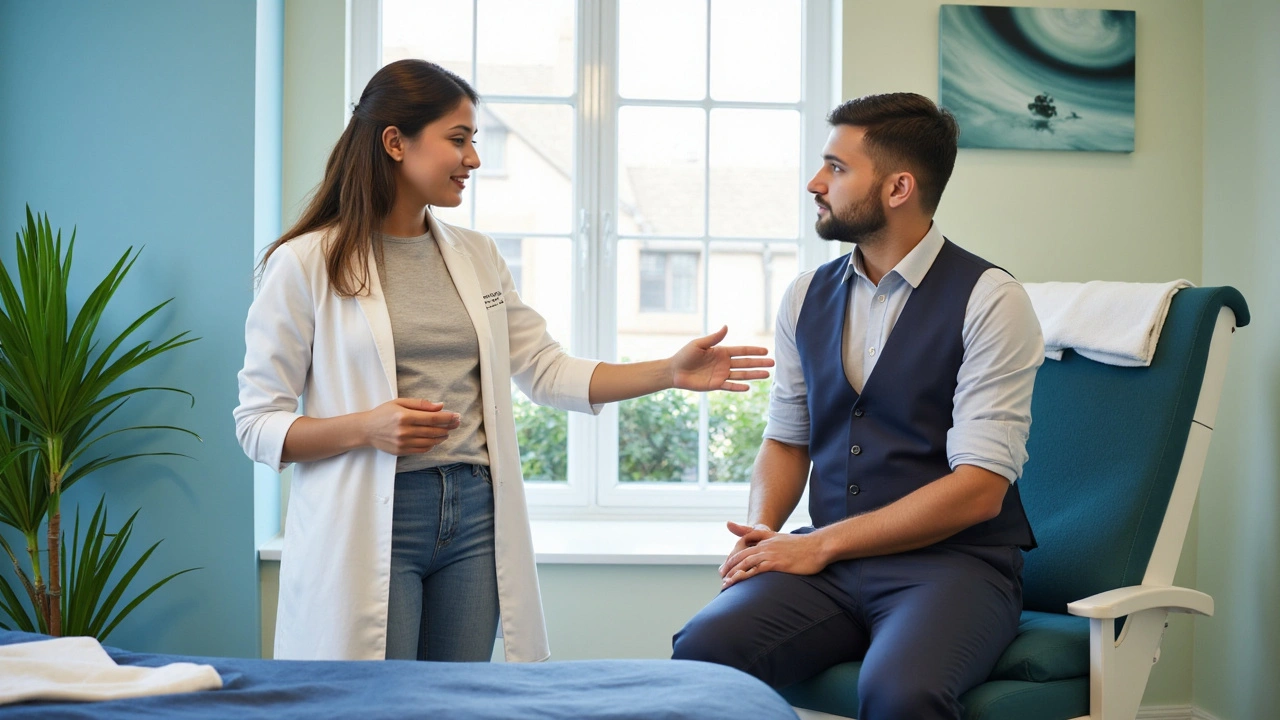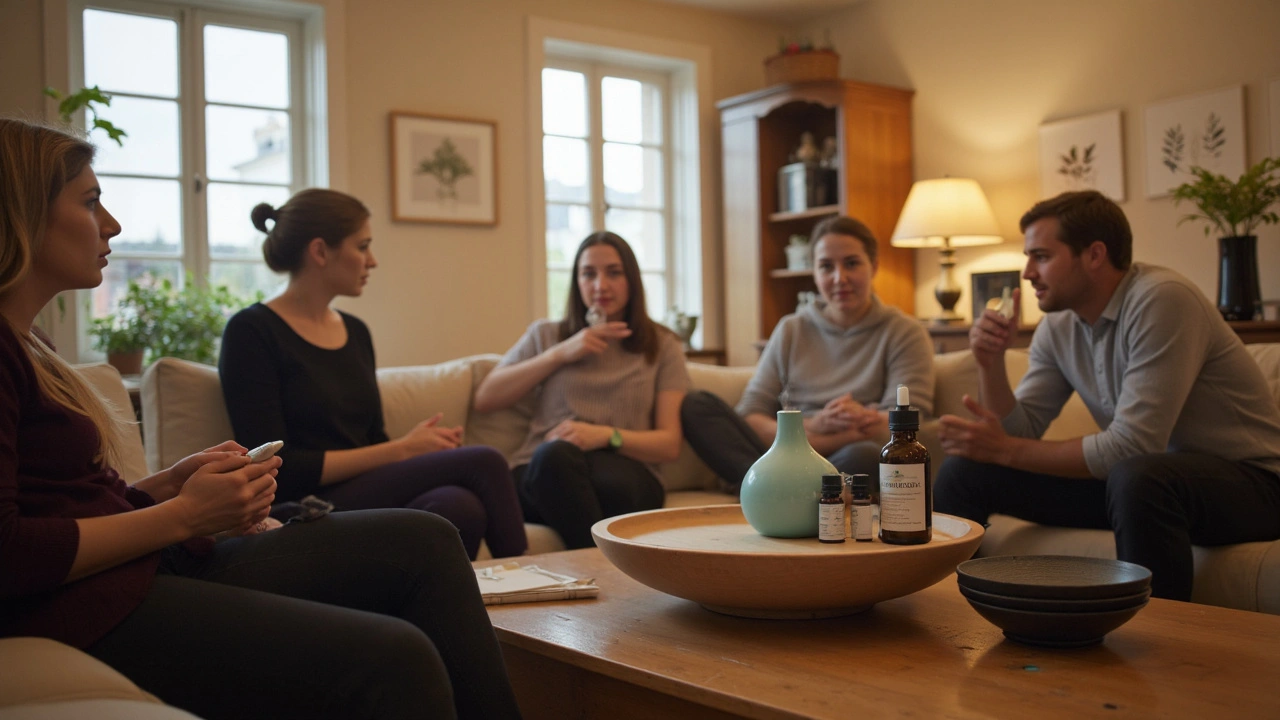Indian Head Massage Lying Down: Is It Possible and Does It Work?

If you’ve ever had an Indian head massage, you probably sat upright in a chair, right? That’s the classic setup, where the therapist moves easily around you, kneading your scalp, neck, and shoulders. So, what if you want to just lie down and chill? Does the massage still work, or does it turn into something totally different?
Here’s the deal: you can totally get an Indian head massage lying down, but it shifts how things feel and what’s possible. Lying flat makes relaxation easier for a lot of people. Your neck isn’t supporting your head, so you don’t have to worry about slumping over or holding tension when you’re supposed to unwind. The pressure from gravity helps you drop into a deeper state of calm.
But there’s a catch. Since Indian head massage isn’t just about your scalp—it hits your shoulders, upper back, and neck too—you need to tweak the technique if you’re stretched out on a table or a mat. Otherwise, parts of what make the massage so satisfying and freeing just don’t land the same way.
- The Usual Way: Indian Head Massage Basics
- What Happens When You Lie Down?
- Pros and Cons of Lying Down
- Changing Up the Technique
- Tips for a Better Lying Down Session
- When to Stick with Sitting
The Usual Way: Indian Head Massage Basics
The classic indian head massage happens with the person sitting in a regular chair. No fancy equipment, just somewhere comfortable to park yourself with your back straight and feet flat. This position gives the therapist full access to your scalp, neck, shoulders, and even the top of your arms. It’s not just about the head—the whole upper body gets some attention.
Indian head massage goes way back in India, used at home and in barbershops. Therapists use simple moves like kneading, squeezing, tapping, and circular rubbing. They hit the scalp, temples, neck muscles, and shoulders, tuning into any tension spots. Here’s the usual step-by-step routine:
- Start by loosening up the shoulders with light kneading.
- Work up the neck using gentle strokes, always moving upward.
- Use fingertips to massage the scalp in small circles, covering the whole head.
- Rub behind the ears and down to the base of the skull.
- Finish with a relaxing shoulder squeeze or tapping, waking up tired muscles.
Most sessions last about 20-30 minutes. You don’t have to undress—just remove bulky layers so the therapist can reach your neck and shoulders.
| Typical Duration | Areas Focused | Common Moves |
|---|---|---|
| 20-30 minutes | Scalp, Neck, Shoulders, Upper Arms | Kneading, Tapping, Circular Strokes |
This method isn’t just about relaxation. People love it for easing headaches, busting stress, and helping with sleep. A boost to circulation is another perk, which some folks say helps them think more clearly afterward.
What Happens When You Lie Down?
When you switch from sitting to lying down for an indian head massage, a few things change right away. First off, your body gets to release the last bits of muscular tension, especially in your neck and shoulders. Without having to hold your head up, your muscles relax on a different level. This boost in relaxation can make the massage feel way more soothing for some people.
But there’s a flip side. The traditional Indian head massage covers not just your scalp, but your upper back, neck, and shoulders. Lying down, the therapist loses easy access to those areas because your shoulders and back are pressed against the table. That means certain signature moves—like deep kneading into the shoulder blades—might not be possible or they might need to be adapted.
The vibe changes too. In the chair, you’re usually a bit more alert because you’re upright. On a table, people doze off more easily. Some therapists even say about 50% of clients drift off at least once when lying down. And for people dealing with headaches or migraines, lying down during the session sometimes gives faster relief, since blood flow around the neck increases without gravity pulling down on your head.
Here’s a quick breakdown of what actually shifts between sitting and lying down for an Indian head massage:
- Muscle relaxation increases because there’s no need for posture control.
- Massage moves on the neck and back may need tweaks or won’t be as intense.
- Breathing often slows, and deep relaxation comes quicker.
- The risk of neck strain all but disappears lying flat.
- People with dizziness or balance issues prefer lying down—no risk of tipping forward.
Some therapists even keep statistics on which positions their clients prefer. Check out this example from a small London spa in 2024:
| Position | Client Preference (%) | Reports of Deep Relaxation (%) |
|---|---|---|
| Sitting | 57 | 42 |
| Lying Down | 43 | 67 |
So, while most traditionalists go for sitting, almost half lean toward lying down—mainly because they find it easier to drop into that “zone out” feeling everyone’s after in a massage.
Pros and Cons of Lying Down
Lying down for an indian head massage is a game-changer for some people but might be less ideal for others. The big draw? Full-body relaxation. When you’re stretched out, your muscles let go in a way that’s tough to match in a chair. You don’t have to hold your posture, so your body gets to take a total break.
- Pro: You’re less likely to tense up or fidget. Most folks find it easier to relax and even doze off.
- Pro: Lying down can open up other massage options, like working in some gentle face or even arm techniques if you want the session to go beyond the standard head and shoulder work.
- Pro: People with back or neck issues often find reclining a lot more comfortable. There’s no pressure on the spine from sitting upright.
But there are some trade-offs. The biggest problem? The classic technique loses a bit of its punch. Gravity doesn’t help the massage therapist’s fingers dig into the shoulders and upper back as effectively—those areas get less attention, and the angle is awkward.
- Con: The therapist can’t get as much leverage on your neck and shoulder knots. Some of the best tension-busting moves just don’t translate well while lying down.
- Con: If you have thick or long hair, lying down might tangle it, making the massage less smooth and possibly uncomfortable when you get up.
- Con: There’s a higher chance some folks might get congested if they’re flat on their back. Not fun if you have sinus troubles or allergies.
Here’s a quick side-by-side to show how it shakes out:
| Aspect | Lying Down | Sitting |
|---|---|---|
| Relaxation Level | Deeper | Good, but depends on posture |
| Shoulder Access | Limited | Full |
| Neck Support | Natural | Needs effort |
| Technique Variety | Some extra face/arms | Standard |
| Best For | People with back/neck pain | Anyone, especially with shoulder knots |
If you’re just looking for pure relaxation or tend to get stiff in a chair, lying down is totally worth a try. But, if busting out shoulder tension and feeling that signature, deep pressure is the goal, the upright position might still be the champ.

Changing Up the Technique
Switching from sitting to lying down during an indian head massage means the therapist has to adjust how they work. Normally, in the seated version, it’s easy to reach your upper back and shoulders with a lot of control. When you’re lying flat, some moves get awkward or lose impact, so the focus shifts a bit.
For example, your scalp and forehead are actually easier to reach when you’re on your back. This lets the therapist really work on those tension points without your head bobbing around. Circular motions across the temples, gentle pulling at the hair roots, and slow kneading at the base of the skull all feel incredible in this position.
The neck area can be a bit trickier. On a massage table, a small pillow or towel under your neck helps keep things comfy and makes it easier for the therapist to slide their fingers under the base of the head. This support lets them use fingertip pressure and gentle stretches, even while you’re lying down.
Getting into the shoulders and top of the back doesn’t work quite the same when you’re flat. Therapists often switch to lighter kneading, using their fingertips instead of deep palm pressure. Sometimes, your arms might be gently lifted or moved to the side to give better access to the shoulder muscles.
For a DIY version, you don’t have to be a pro. Try these simple tweaks:
- Support your head with a cushion so you’re relaxed but not slouching.
- Use fingertips to make small circles around the scalp, temples, and hairline.
- Don’t forget the ears—a gentle rub here helps with relaxation.
- Keep your arms by your side or across your chest, and use slow motions on your own neck and shoulders where you can reach.
The bottom line: the vibe changes, but with a few adjustments, a lying-down Indian head massage hits those stress points while amping up the relaxation.
Tips for a Better Lying Down Session
If you want your indian head massage to feel just as good lying down as sitting up, a few hacks can really make a difference. Start with your setup. Use a massage table, yoga mat, or thick blanket on the floor. Make sure your head, neck, and upper back feel supported—stack a towel or small pillow under your neck if you need to, but avoid lifting your head too high, or you’ll strain your neck muscles.
It’s a good move to keep your arms at your sides or resting on your belly. This stops your shoulders from bunching up, which can mess with the flow of the massage. Also, dim the lights and maybe put on some chill sounds—this isn’t a spa, but you can come close.
Most people enjoy more relaxation when lying down. A small survey in 2023 by an Australian therapy group found 64% of their clients reported deeper calmness getting head massages lying down compared to sitting. But, comfort goes up only when your head and neck are lined up right. Otherwise, you get muscle aches, and nobody wants that.
- Ask your therapist to stay mindful of your neck and upper back—they might have to work from the side rather than from behind.
- If doing this at home, use coconut or almond oil (if you’re not allergic) for smoother scalp movements, and a soft towel to catch any oil drips.
- Keep sessions to 20–30 minutes. Lying down too long without changing position can leave you stiff, not soothed.
For the numbers people, here’s a quick look at what folks say they noticed lying down versus sitting up:
| Experience | Lying Down (%) | Sitting Up (%) |
|---|---|---|
| Felt Deep Relaxation | 64 | 52 |
| Neck Discomfort | 18 | 10 |
| Preferred the Position | 55 | 45 |
The bottom line? Pay close attention to how your body feels, and tweak your setup until everything feels smooth. Better support and little adjustments make a lying-down session totally worth it.
When to Stick with Sitting
If you’re aiming for the classic experience, there are good reasons to keep your indian head massage in the upright position. Sitting makes it much easier for your therapist to get full access to your shoulders, neck, and upper arms, which is the real sweet spot for people with desk jobs or tension headaches. If you often deal with knots in your shoulders or a stiff neck, sitting upright lets the massage strokes sink in deeper and more precisely.
Some professional therapists even say it’s safer to stick with sitting if you have certain health issues. For folks with back problems, acid reflux, or breathing difficulties, lying down can actually make discomfort worse or mess with blood flow. When you’re sitting, those issues usually stay out of the way.
Another plus: communication. When you’re upright, you and your therapist can talk easily during the session. This means you can mention if the pressure’s too hard, or if there’s a sensitive area that needs a lighter touch. That’s trickier to do when you’re face-up and super relaxed.
You’ll also want to stick to sitting if you want quick, fuss-free sessions. In busy salons or spa settings, the chair method lets you pop in for a fast fix without needing to change clothes or get onto a massage table. Less hassle, same great results.
- If you have shoulder or upper back tension, stick to the chair.
- Health issues like reflux, back pain, or asthma? Sitting is safer.
- Keep communication easy and clear during the session.
- Want a fast, convenient massage? The chair wins every time.
Lying down has its perks, but for the full traditional experience, you can’t beat sitting in a sturdy chair, letting the therapist work their magic from every angle.


